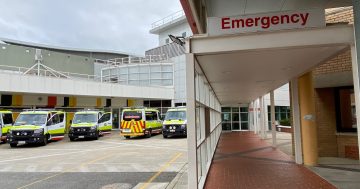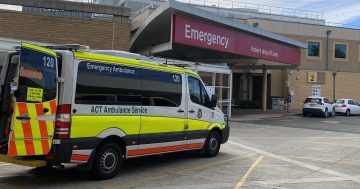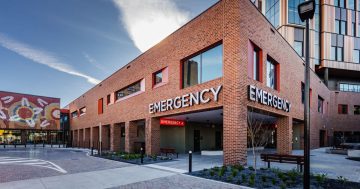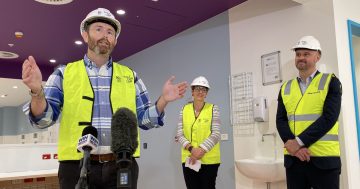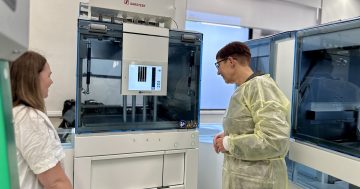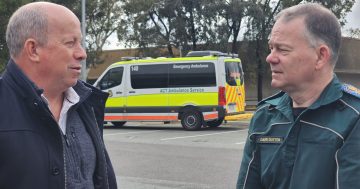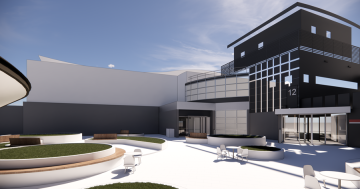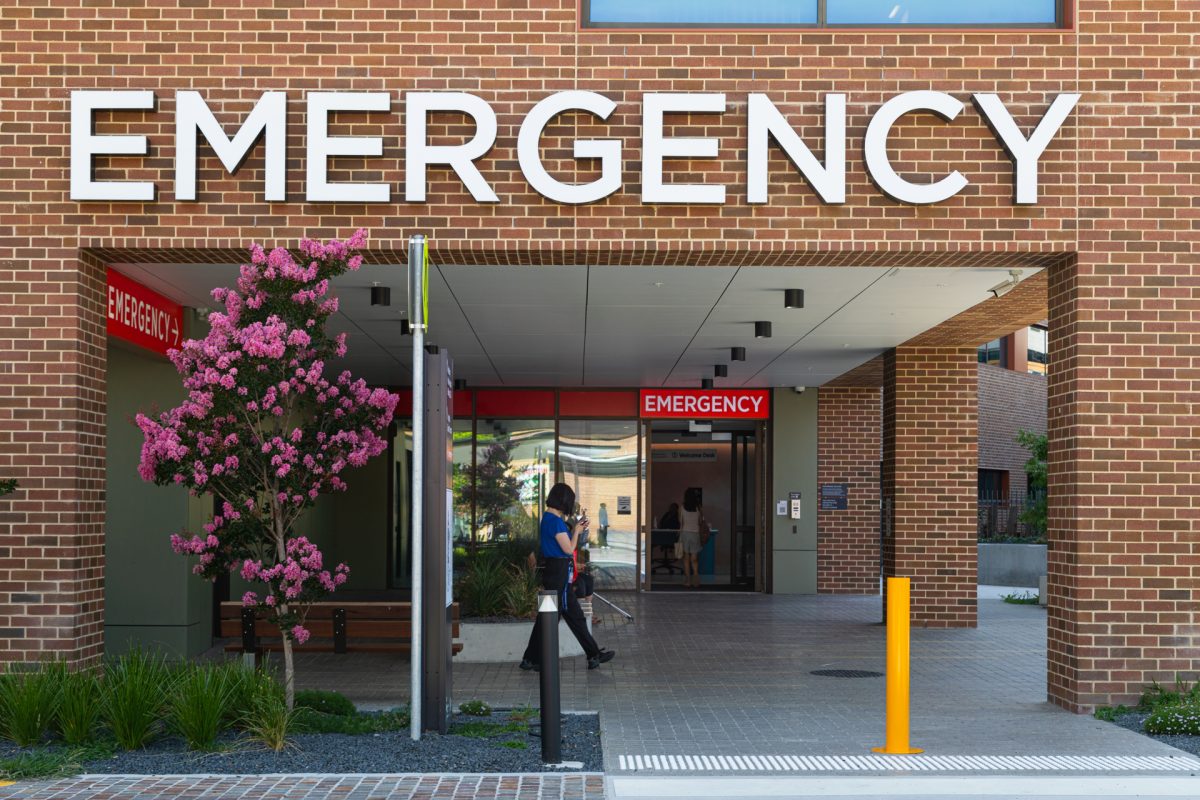
Canberra Hospital’s emergency department is averaging about 320 presentations per day. Photo: Michelle Kroll.
Social media blew up earlier this week with claims wait times at Canberra Hospital’s emergency department had exceeded nine hours.
“The total wait time at Canberra Hospital is 9 hours and 13 minutes, wow! I suggest people go to the walk in centres if they can or north Canberra hospital,” a post stated.
Some commentors suggested people jump across the border to use Queanbeyan services, but were told they were also under pressure.
“[Queanbeyan Urgent Care] is at capacity and sending people to Queanbeyan Hospital Emergency,” one person wrote.
When contacted by Region, a Canberra Health Services (CHS) spokesperson acknowledged the post, but said there was more to the numbers.
“The recently reported wait time of nine hours is incorrect. On Monday, 11 August, there was an anticipated wait time of five hours and an estimated total time of nine hours for non-urgent patients,” they said.
“The estimated total time includes the full clinical journey from arriving, seeing a nurse, being triaged, seeing a doctor, having tests and treatment, and being admitted or discharged.”
The CHS spokesperson said ED treatment times were the calculated average times for non-critical patients that had been seen in the previous two hours.
“Emergency department waiting time represents the expected time that four out of five non-critical patients will wait,” they said.
ED wait times can be viewed through the ACT Health app, and the view can be toggled to tell a person solely the wait time, or the full wait-to-treatment-to-discharge/admission journey.
On Monday (11 August), 326 patients presented to Canberra Hospital’s ED. Tuesday saw 312 people walk through the doors, followed by 298 people on Wednesday.
But that doesn’t compare with Canberra Hospital’s record daily number of emergency department presentations: 356 people on 16 July.
Canberra Hospital medicine and emergency department clinical director Dr Shakeeb Bani-Yaseen said the ED was averaging about 320 presentations each day.
“I’ve been at Canberra Hospital on and off for the past 10 years and I remember in 2018 and 2019, 250 patients per day was a busy day,” he said.
“Now, we see 320 patients and we go, ‘Today wasn’t too busy’. That’s due to there being a lot of complex medical issues and the increased population both in Canberra and the surrounding regions.”
Canberrans aren’t the only ones using ACT public healthcare.
NSW patients account for about a quarter of ED presentations.
Region asked NSW Health Minister Ryan Park whether any of the hospitals surrounding Canberra – such as Goulburn, Yass or Queanbeyan – had been on bypass to Canberra on Monday (11 August).
A spokesperson responded that while many people could receive the care they required at their local hospital, sometimes they needed to be transferred.
“Southern NSW Local Health District has local arrangements in place to enable inter-hospital transfers when required with the ACT,” they said.
“Transfer decisions are dependent on a number of factors, but the clinical situation and needs of the patient and their family are paramount.”
Conversations are continuing between the ACT and NSW about whether the state should be contributing to Canberra’s health infrastructure.
ACT Health Minister Rachel Stephen-Smith said it was also negotiating a new five-year national health reform agreement with all jurisdictions “to deliver better outcomes through our public hospital system.”
“Through that Agreement, we are seeking recognition of the higher cost per unit of activity faced by smaller jurisdictions. This would help to more closely align both Commonwealth and NSW funding with the actual costs of delivering care in the ACT,” she said.
“We will also continue the conversation with NSW about contributing to major capital investments in our hospitals.”
She stated that while recent wait times may have been high, in 2024-25 CHS had recorded its best ED wait times since 2017-18.
“In 2024-25, 61 per cent of presentations in the ACT’s emergency departments had a length of stay of four hours or less. This is a five-percentage point improvement on the prior year,” she said.
“This has been achieved while we continue to see increases in presentations. It is the result of the system-wide improvements and investments the government had made over several years, and the hard work of our health professionals.”
When Region asked Minister Park if NSW should be contributing to ACT health infrastructure, his spokesperson said the state contributed in other ways.
“NSW pays for care for all NSW residents treated in the ACT, in accordance with the NSW-ACT Cross Border Agreement,” they said.
“We work collaboratively to address seasonal issues including increased levels of Covid-19 and influenza, within the community and our workforce, which present additional challenges to both the NSW and ACT health systems.”
Region contacted the Southern NSW Local Health District but did not receive a response.












